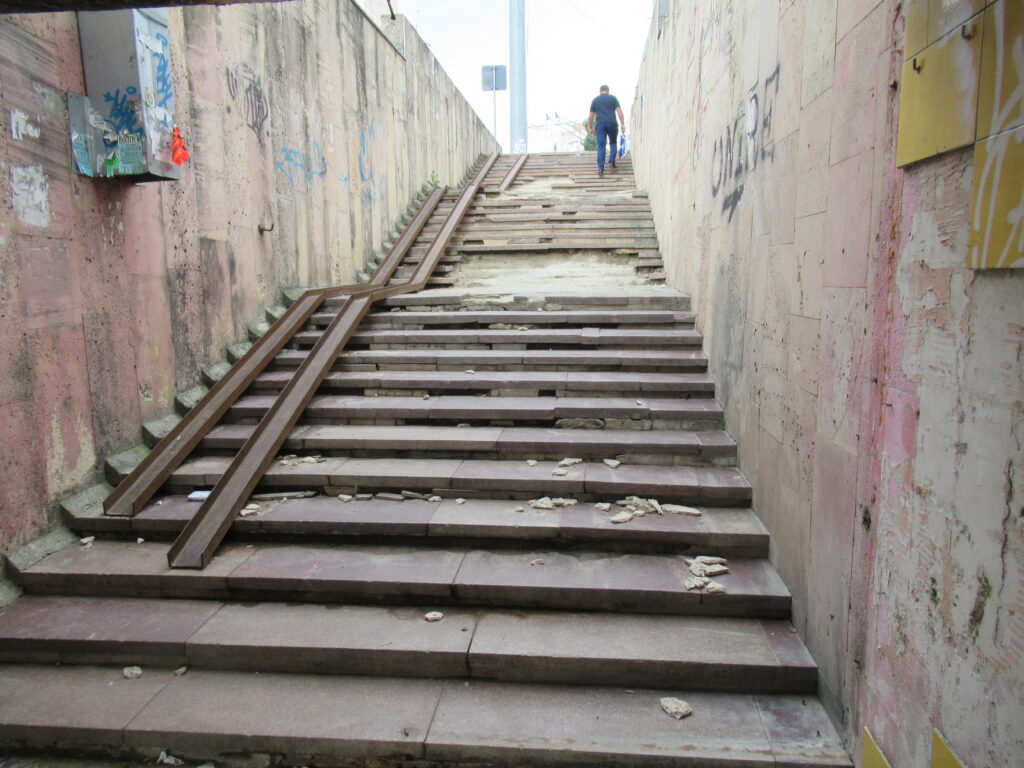Question: Why are busy roads barriers to pedestrians?
Busy roads, with lots of cars, or cars moving at fast speeds, are dangerous and unpleasant for pedestrians. Because of this, people perceive these roads as barriers to walking. We call this “community severance” or the barrier effect of roads. The same type of effect also happens in roads that cannot be crossed at all (for example, motorways) and in railways. But my research has focused mostly on roads that can be crossed – but are difficult and dangerous to cross.

People can cross roads using crossing facilities, such as ‘zebras’ (without signals), signalised crossings, footbridges, or underpasses. But that does not solve the barrier problem. There is still risk when crossing at zebras, because we’re never quite sure if cars are really going to stop. Signalised crossings feel safer but pedestrians have to wait, sometimes several minutes, especially if the crossing is not direct.
And then there are footbridges and underpasses, which most pedestrian hate. This is becausee of the effort of going up and down and the sense of unpleasantness and insecurity, especially if the design and maintenance is poor. The picture below is an extreme example. Because of all these problems, if people can avoid footbridges and underpasses, they will, even if they have to walk further. So crossing facilities can aggravate, rather than solve the barrier effect of roads.

I have participated in several projects on this topic. We found consistent evidence that busy roads make people walk less than what they would like to. This has broader effects on people’s lives. For example, in this paper, we found that people who regard busy roads in their neighbourhood as barriers to walking tend to have poorer health than people with similar characteristics (age, income, etc.) but living in neighbourhoods without barriers to walking. And in this other paper, we found that people in neighhourhoods with barriers also have lower subjective wellbeing, i.e., they feel worse about their life in general.
The result above were obtained in specific urban locations (in the UK). However, in this paper, we used an online survey covering Great Britain (i.e. almost all of the UK). We confirmed that living near a busy road is indeed related to poorer self-rated health and subjective wellbeing.
Furthermore, we found that is also related to lower “neighbourhood social capital”, i.e. people living near busy roads have a poorer image of (and relate less with) their neighbourhoods and the people living in them. We also found that they spend less in local shops, compared with people who live in areas where roads are not a problem to walking.
I am interesting in the value of all these effects, expressed in money. That is straightforward when the effect is monetary (such as less spending in local shops). But is a bit more complicated when the effect is not monetary (health, wellbeing, social capital). But we found a solution, using statistical models. We estimated the cost of the barrier effect of road traffic on local communities in Great Britain is 1.6% of Great Britain’s GDP or £631 per person per year. This has been reported in the general press.
Another question is: now that we know the effects and the cost of barriers to pedestrians, what are we going to do about it? We have developed several tools to identify where the barriers are. We also developed a method to integrate these concerns in appraisal. Appraisal is what governments do to determine if it’s worth to implement a policy or not (in this case, reduce or remove a barrier to walking). The development of the method is reported in this paper. The method was then integrated into a tool that can be used by planners or the general public. The tool forecasts the extra walking trips that would be made if governments improved pedestrian conditions in a busy road. It also estimates the value of that, in money. Download and read more about this tool, and how to use it, here.